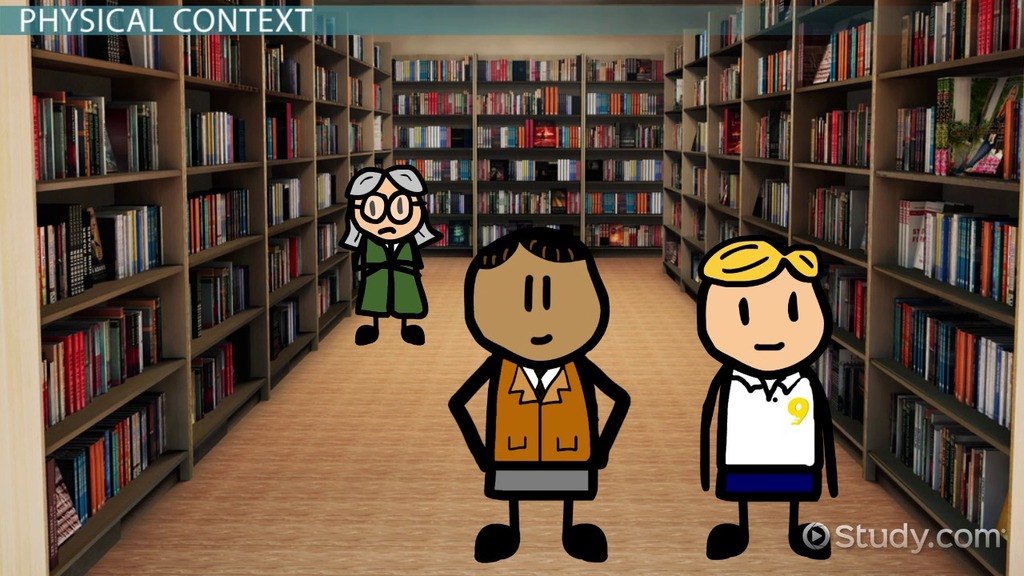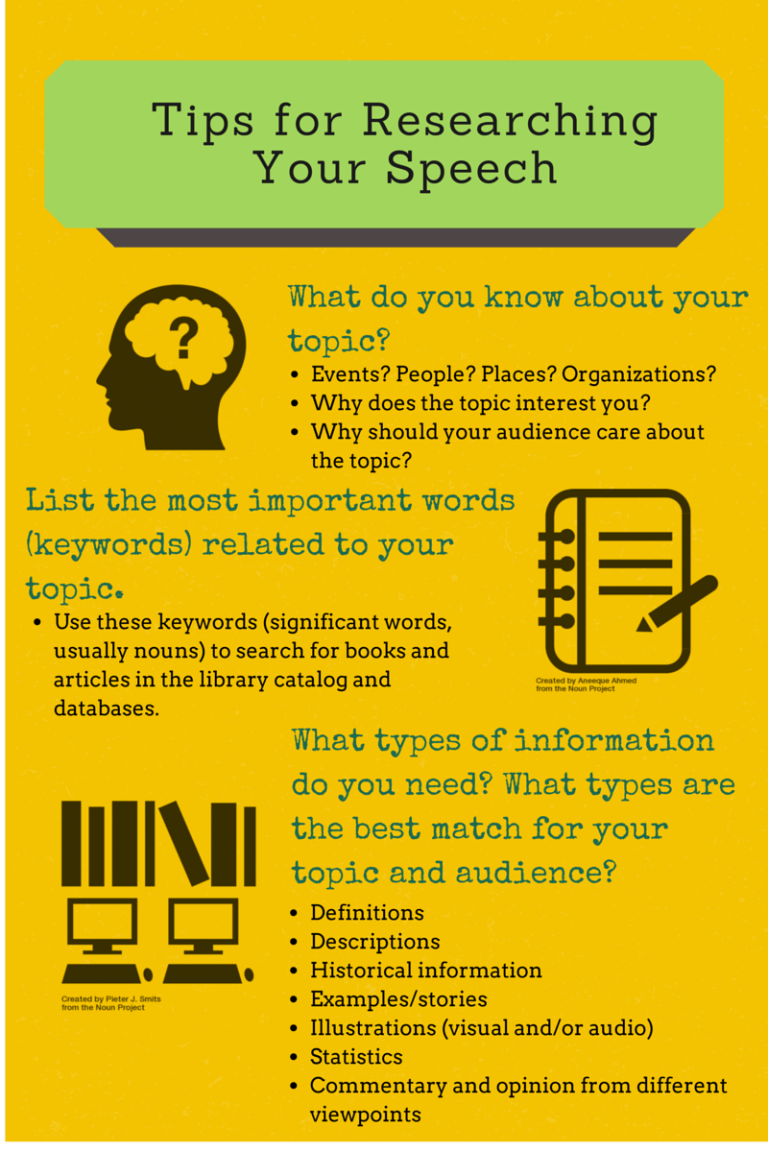How Does Context Influence Your Communication?
Context plays a significant role in shaping our communication by influencing our choice of words and the meaning behind them. The way we interpret and convey messages is heavily influenced by the specific context we find ourselves in, whether it’s a professional setting, a social environment, or a cultural context.
In these different contexts, our communication style, tone, and the level of formality all vary, which can affect how our message is received and understood by others. The understanding of context is crucial for effective and clear communication, as it helps us tailor our messages to the specific situation and audience, ensuring that our words have the desired impact.
As such, context must be carefully considered and taken into account to foster successful communication in any given situation.
The Role Of Context In Effective Communication
Context plays a significant role in effective communication by influencing the way your message is understood and interpreted. The surrounding environment, cultural background, and previous interactions can shape the meaning of your words, making it crucial to consider context to ensure clear and impactful communication.
Understanding The Impact Of Context On Communication
Effective communication is heavily influenced by the context in which it occurs. Context refers to the environment, situation, and cultural factors that shape how we interpret and understand messages. By understanding the impact of context on communication, we can navigate conversations more successfully and avoid misunderstandings.
Here are some key points to consider:
- Context provides the framework for understanding: The context in which a message is delivered greatly influences its meaning. Whether it’s a casual conversation with friends or a formal presentation in a boardroom, the context sets the expectations and guides our interpretation of the message.
- Cultural context influences communication norms: Different cultures have varying communication styles and norms. Factors such as social hierarchy, directness, and nonverbal cues can have a significant impact on how messages are conveyed and understood.
- Context shapes the tone and intention of communication: The same words can have different meanings depending on the context. For example, a simple “thank you” can be interpreted as sincere appreciation or mere politeness, depending on the context in which it is used.
- Context provides cues for interpretation: Nonverbal cues, such as body language and facial expressions, play a crucial role in communication. Context provides important cues for interpreting these nonverbal signals, enhancing our understanding of the message being conveyed.
- Context helps infer meaning: Sometimes, the meaning of a message may not be explicitly stated. However, the surrounding context can help us infer the intended meaning. By considering the broader context, we can fill in the gaps and grasp the message’s full significance.
The Power Of Context In Shaping Meaning
Context has the incredible power to shape the meaning of our communication. Here’s why:
- Helps avoid misinterpretation: When we communicate, the context provides essential clues that help us interpret and understand the intended meaning. By considering the context, we can avoid miscommunication and ensure our message is received as intended.
- Adds depth and nuance: Context provides richness and depth to our communication. By considering the context, we can convey our ideas more effectively, adding layers of meaning that go beyond the words alone.
- Facilitates effective decision-making: Context informs our decision-making process. By understanding the context, we can make informed choices and tailor our communication to best suit the situation.
The Interplay Between Context And Verbal Communication
Verbal communication relies heavily on context. Here’s how the two are intertwined:
- Context provides meaning to words: Words gain their full meaning through the context in which they are spoken. The same word can have different meanings depending on the context and the individuals involved.
- Helps convey emotions and intentions: The context in which words are spoken helps convey emotions and intentions. The tone of voice, choice of words, and the overall setting provide cues that shape how the message is understood.
- Ensures effective message reception: The context in which verbal communication takes place ensures that the message is received and understood appropriately. Understanding the context allows us to convey our message clearly and adapt our communication style accordingly.
The Influence Of Context On Nonverbal Communication
Nonverbal communication is heavily influenced by the surrounding context. Consider the following:
- Expression of emotions: Context plays a vital role in determining how emotions are expressed nonverbally. The context influences our facial expressions, body language, and gestures, allowing us to convey emotions effectively.
- Body language and posture: Posture, gestures, and body language can communicate a wide range of messages. The context in which these nonverbal cues are observed helps interpret their meaning accurately.
- Cultural variations: Cultural context significantly impacts nonverbal communication. Different cultures have distinct nonverbal cues, such as eye contact, personal space, and hand gestures. Understanding the cultural context is crucial to interpreting nonverbal cues accurately.
Context plays a significant role in effective communication. It shapes our understanding, influences meaning, and enhances both verbal and nonverbal communication. By being mindful of the context in which our communication takes place, we can improve our overall communication skills and build stronger connections with others.
Cultural Context And Communication
Cultural context significantly influences communication, shaping our understanding and meaning of messages. By considering the cultural background, values, and norms, we can adapt our communication style to effectively connect with others.
The Cultural Dimensions Of Communication
- Different cultures have unique ways of communicating, based on their cultural values, beliefs, and practices.
- Cultural dimensions, such as individualism vs. Collectivism, power distance, and uncertainty avoidance, influence communication styles.
- Understanding these dimensions can help individuals navigate intercultural communication more effectively.
Cross-Cultural Communication Challenges And Strategies
- Communicating across cultures can present various challenges, including language barriers, nonverbal misinterpretations, and differing communication norms.
- Strategies for successful cross-cultural communication include active listening, adapting communication styles, and seeking clarification when necessary.
- Embracing cultural diversity and promoting cultural sensitivity can foster better understanding and collaboration in cross-cultural settings.
The Role Of Cultural Norms In Shaping Communication
- Cultural norms shape communication by defining what is considered appropriate or acceptable within a specific culture.
- These norms dictate aspects such as the use of formal or informal language, levels of directness or indirectness, and the importance of hierarchy in communication.
- Understanding and respecting cultural norms can help avoid misunderstandings and promote effective communication across cultural boundaries.
Cultural Context’S Impact On Language And Communication Styles
- Cultural context influences language choices and communication styles differently across cultures.
- Language reflects cultural values and perspectives, affecting the way ideas are expressed and understood.
- Communication styles can vary, ranging from high-context cultures, where indirect communication and nonverbal cues are significant, to low-context cultures that rely more on explicit and direct communication.
Cultural context plays a crucial role in shaping communication. Cultural dimensions, cross-cultural challenges, cultural norms, and language choices are all intertwined, impacting how people interact and understand each other. By being aware of these influences and employing effective strategies, individuals can bridge cultural gaps and enhance communication in diverse settings.
Social Context And Communication
Context plays a significant role in shaping our communication. The circumstances in which we engage with others impact the meaning, tone, and effectiveness of our messages. Understanding and adjusting to the social context allows for more successful and impactful communication.
Communication In Different Social Settings
In our daily lives, we communicate in various social settings, from formal business meetings to casual conversations with friends. The context of our communication plays a vital role in how effectively our message is conveyed, received, and understood. Let’s explore the influence of social context on communication:
- In a formal setting: In a professional environment, such as a corporate meeting or presentation, communication tends to be more structured and formal. People use professional language and adhere to certain etiquettes to convey respect and professionalism.
- In an informal setting: In casual social gatherings or friendly conversations, communication becomes more relaxed and informal. People may use slang, humor, or colloquial language to create a comfortable atmosphere.
- In a cultural setting: Cultural context heavily influences communication. Different cultures have unique communication styles, non-verbal cues, and expectations. Being aware of these cultural differences is essential to avoid misunderstandings or misinterpretations.
- In a virtual setting: With the rise of technology, communication has expanded to virtual platforms like emails, video conferences, or social media. In these settings, the absence of physical presence can impact the tone and clarity of the message transmitted.
The Effects Of Social Status On Communication
Social status, whether based on factors like wealth, occupation, or education, can significantly impact communication dynamics. Here are some effects of social status on how people communicate:
- Power dynamics: Individuals with higher social status often hold more power in communication. They may exert dominance, influence decisions, and receive more attention and respect from others.
- Inequalities: Social status can create inequalities in communication, with those of lower status facing barriers in being heard or their opinions being valued. This can lead to a lack of confidence and lesser participation in discussions.
- Perception and credibility: Social status influences how others perceive and evaluate communication. People often attribute more credibility and expertise to individuals with higher social status, which can affect the reception of their message.
The Influence Of Social Context On Power Dynamics In Communication
In any social context, power dynamics play a crucial role in shaping communication patterns and outcomes. Here’s how social context influences power dynamics:
- Hierarchy within groups: Within social groups, there is often a hierarchical structure that determines the distribution of power and authority. Those in higher positions may assert their dominance and influence the flow of communication.
- Formal vs. Informal settings: The power dynamics can differ depending on the social setting. In formal settings like business meetings, power may be more concentrated in higher-ranking individuals. In informal settings, power may be more evenly distributed or based on other factors like expertise or charisma.
- Contextual cues: Social context provides cues that influence power dynamics. These cues can include seating arrangements, verbal and non-verbal behaviors, and the use of titles or honorifics.
Social Context’S Role In Conflict Resolution
When conflicts arise, social context shapes the resolution process. Understanding the impact of social context is crucial for effective conflict resolution. Here’s how social context influences conflict resolution:
- Mediating influence: Social context can influence how conflicts are mediated or resolved. Third-party mediators, such as supervisors or trained professionals, can help navigate conflicts in different social settings.
- Communication norms: Social context defines the norms and rules for conflict resolution. Some cultures may encourage direct confrontation and open discussions, while others may prefer more indirect approaches like compromising or seeking harmony.
- Power dynamics: Social context also affects power dynamics within conflicts. In some settings, power imbalances can hinder resolution efforts, while in others, power dynamics may be more equitable, allowing for fair negotiations.
Understanding the influence of social context on communication is essential for effective and meaningful interactions. By recognizing the nuances of different social settings, considering social status implications, and understanding power dynamics, individuals can navigate communication challenges and enhance understanding and collaboration.

Credit: news.virginia.edu
Environmental Context And Communication
The way we communicate is heavily influenced by the context we find ourselves in, especially in relation to the environment we are in. This includes factors such as physical surroundings, cultural norms, and social dynamics, which all shape how we convey our messages and interpret the messages of others.
Understanding the environmental context can lead to more effective and impactful communication.
How Physical Environment Affects Communication
- The physical environment plays a significant role in shaping our communication interactions. Here’s how it influences our communication:
- Noise levels: High noise levels can make it challenging to hear and understand each other, leading to miscommunication and frustration.
- Proximity: The distance between communicators can vary based on the physical environment. Close proximity promotes more intimate and informal communication, while greater distance can create a formal atmosphere.
- Lighting: Lighting conditions impact nonverbal communication cues, such as facial expressions and body language. Dim lighting may hinder visibility, affecting communication effectiveness.
- Temperature: Extreme temperature conditions can affect people’s comfort levels, potentially influencing their mood and communication style.
- Comfort and ergonomic factors: A comfortable environment can enhance communication by allowing participants to focus better and feel at ease.
Technology’S Impact On Communication Context
- Technological advancements greatly influence our communication context. Consider the following ways technology impacts our communication:
- Connectivity: With the advent of smartphones and the internet, communication has become more instant, allowing for real-time conversations regardless of physical distance.
- Multimodal communication: Technology enables us to communicate using various modes simultaneously, combining text, images, audio, and video.
- Global reach: Communication technology has made it easier to connect with individuals worldwide, breaking down geographical barriers and expanding our networks.
- Communication speed: Technological tools facilitate faster communication, enabling quick exchanges of information and reducing response times.
- Accessibility: Technology has made communication more accessible for individuals with disabilities, providing tools for alternative methods of communication.
The Role Of Spatial Context In Nonverbal Communication
- Nonverbal communication relies heavily on spatial context. Consider the following aspects of spatial context and how they influence nonverbal communication:
- Personal space: Different cultures have varying concepts of personal space, and violation of personal space boundaries can affect the comfort and trust between communicators.
- Proxemics: Proxemics refers to the use of space to communicate. For example, people standing close together may indicate familiarity or intimacy, while greater distance may suggest formality or a lack of closeness.
- Gestures and body language: Spatial context affects the interpretation of gestures and body language. The positioning and movement of individuals in relation to each other can convey different meanings or emotions.
- Territoriality: How individuals claim and protect their physical space can influence communication dynamics and power dynamics within a social or work setting.
Environmental Context’S Influence On Virtual Communication
- Even in virtual communication, the environmental context plays a crucial role that affects our interactions:
- Background and surroundings: The environment visible during virtual communication can provide additional information about an individual’s interests, personality, or professionalism.
- Distractions: Environmental distractions, such as noise or visual disturbances, can disrupt concentration and hinder effective virtual communication.
- Lighting and visibility: Proper lighting and visibility are essential for conveying nonverbal cues accurately during virtual communication, ensuring that facial expressions and body language are clearly visible.
- Internet connection: The reliability and speed of internet connectivity impact the quality of virtual communication. Frequent disruptions or lag can lead to miscommunication or frustration.
- Technology proficiency: Familiarity with the virtual communication tools and platforms used in a specific environment can influence the participants’ comfort and fluency in communication.
The physical environment, technology, spatial context, and the virtual environment all have a significant impact on our communication interactions. Being aware of these influences allows us to adapt and communicate effectively in various contexts.
Context In Professional Communication
Context plays a crucial role in professional communication, shaping how we express ourselves. Whether it’s through tone, language choice, or non-verbal cues, the context surrounding a conversation influences our message, making it essential to adapt and consider our audience’s perspective.
In the professional world, effective communication is crucial for building strong relationships, achieving work goals, and maintaining a positive work environment. One significant factor that greatly influences communication in the workplace is the context in which it occurs. Understanding the influence of context on professional communication can help individuals tailor their communication styles and etiquettes accordingly.
Let’s explore how context impacts communication in a professional setting.
Professional Context’S Effects On Communication Styles And Etiquette:
- Hierarchical Structure: In organizations with a clear hierarchy, communication often follows a top-down approach. Managers and leaders communicate directives and information to their subordinates, while subordinates provide feedback upward. This structure influences communication styles, with superiors typically using a more formal tone and subordinates using a respectful and professional tone.
- Formal vs. Informal: Depending on the nature of the workplace and the relationships between colleagues, communication may vary from formal to informal. In more formal settings, such as a law firm or consultancy, communication is typically professional and business-like. Conversely, in creative industries or smaller startups, communication may be more casual and relaxed, fostering a friendly and open atmosphere.
- Cultural Diversity: Organizations comprised of diverse individuals from different cultural backgrounds require a heightened awareness of cultural context in communication. It is essential to consider the cultural nuances and norms of others to avoid misunderstandings or unintentionally causing offense. Cultivating cultural sensitivity promotes effective communication and fosters a harmonious work environment.
- Written Communication: Written communication plays a significant role in professional contexts, such as emails, memos, and reports. The tone, clarity, and level of formality in written communication can vary depending on the context. Adhering to proper grammar, punctuation, and formatting shows professionalism and ensures clear and effective communication.
Communication In The Workplace: Understanding Organizational Culture:
- Values and Beliefs: Organizational culture encompasses the shared values, beliefs, and norms that influence the behavior and communication within the workplace. Understanding an organization’s culture is vital in adapting one’s communication style to align with the accepted norms. For example, in a company that values innovation and creativity, fostering open and collaborative communication is crucial.
- Communication Channels: Different organizations employ various communication channels, such as face-to-face, emails, virtual meetings, or project management tools. Understanding how communication flows within the organization helps individuals choose the appropriate channel and adapt their communication style accordingly. For instance, urgent matters may require immediate face-to-face communication, while non-urgent matters can be discussed via email.
- Decision-Making Styles: Organizational culture often influences decision-making styles. Some organizations value consensus and collaborative decision-making, while others have a more hierarchical and autocratic approach. Understanding the decision-making process helps individuals tailor their communication by engaging relevant stakeholders and presenting information in a manner that aligns with the organization’s decision-making style.
The Role Of Context In Effective Business Communication:
- Clear Expectations: Context provides clarity about expectations within the professional environment. Recognizing what is expected, whether it’s a formal presentation or a casual team discussion, allows individuals to communicate more effectively. Adapting one’s communication style to meet these expectations ensures messages are received and understood appropriately.
- Building Trust: Context plays a vital role in building trust among colleagues and leaders within an organization. By understanding the dynamics of their professional context, individuals can communicate in a way that enhances trust and rapport. Trustworthy communication fosters stronger relationships, promotes collaboration, and increases overall productivity.
- Meeting Objectives: Effective communication within a professional context contributes to the successful achievement of organizational objectives. By considering the context, individuals can align their communication with the desired outcomes, ensuring that their messages are relevant, persuasive, and capable of inspiring action.
Adapting Communication Style To Different Professional Contexts:
- Client Communication: When interacting with clients or customers, adapting communication style is crucial. Understanding the client’s preferences, industry norms, and level of formality helps establish rapport and build trust. Adapting one’s language, tone, and level of technicality ensures effective communication and fosters positive client relationships.
- Cross-Functional Communication: Within organizations, different departments may have unique communication styles and terminologies. In cross-functional collaboration, adapting communication style to suit the needs and expectations of colleagues from various departments enhances understanding and facilitates smooth cooperation.
- Virtual Communication: With the rise of remote work and virtual teams, adapting communication style to virtual contexts is essential. Clear and concise messaging becomes more critical when relying on digital platforms such as email, video conferences, or instant messaging. Precise and explicit communication helps minimize misinterpretation and ensures remote teams can work collaboratively.
Context significantly influences professional communication. Understanding the specific context within which communication occurs allows individuals to adapt their communication styles and etiquettes accordingly. By doing so, effective business communication can foster positive relationships, enhance productivity, and contribute to the achievement of organizational goals.
Psychological Context And Communication
The ways in which context can shape our communication are explored in the psychological context. Understanding how different contexts influence communication is essential in effectively conveying our messages to others.
Emotional Context’S Influence On Communication
- Our emotions play a significant role in shaping our communication patterns.
- When we are happy, we tend to communicate differently than when we are angry or sad.
- Emotional context influences our tone of voice, body language, and overall demeanor.
- It is essential to consider the emotional context of a conversation to ensure effective communication.
- Emotions can impact our ability to listen attentively and empathize with others.
- Examining the emotional context allows for a deeper understanding of communication dynamics.
Psychological Factors Shaping Interpersonal Communication
- Individual psychological factors greatly influence interpersonal communication.
- Personality traits, such as extroversion or introversion, impact how individuals communicate.
- Attitudes, beliefs, and values influence our opinions, which, in turn, affect our communication style.
- Cognitive processes like perception and interpretation shape how we understand and respond to messages.
- Past experiences and cultural background play a significant role in our communication behavior.
- Understanding these psychological factors helps us navigate communication challenges.
Communication In High-Stress Contexts
- High-stress contexts can significantly impact communication dynamics.
- Stress can affect our ability to think clearly, leading to misinterpretation of messages.
- The fight-or-flight response triggered by stress may hinder active listening and empathy.
- In high-stress situations, communication can become reactive and emotional.
- It is crucial to manage stress proactively to maintain effective communication.
- Creating a calm and supportive environment helps minimize the negative impact of stress.
The Role Of Trust And Rapport In Psychological Communication Contexts
- Trust and rapport are crucial factors in psychological communication contexts.
- Trust involves believing in the reliability and honesty of the individuals we communicate with.
- Establishing trust leads to open and honest communication.
- Rapport refers to the connection and understanding we build with others.
- Building rapport promotes more effective communication and collaboration.
- Trust and rapport create a safe space for open dialogue and exchange of ideas.
Understanding the psychological context in communication is essential to foster effective and meaningful connections. By considering emotional influences, individual psychological factors, communication in high-stress contexts, and the role of trust and rapport, we enhance our ability to engage and connect with others.
Remember, effective communication is not solely based on the words we speak, but also on the context in which we communicate. By understanding and adapting to various psychological contexts, we become better communicators in all areas of our lives.
Contextual Communication Challenges And Solutions
Contextual communication presents various challenges and solutions as it heavily influences the way we communicate. Understanding the context enables effective communication, improves interpretation, and minimizes misunderstandings for meaningful interactions. Emphasizing context enhances the clarity and effectiveness of interpersonal communication.
Navigating Ambiguity In Communication Contexts
- Communication can often be ambiguous, especially when it comes to understanding the context in which it takes place. Here are some challenges and solutions to navigate ambiguity in communication contexts:
- Have a clear understanding of the situation: Ensure that you have all the relevant information about the context before engaging in communication. This will help you interpret the message accurately and avoid misconceptions.
- Ask for clarification: If something is unclear or ambiguous, don’t hesitate to ask questions. Requesting clarification can help you gain a better understanding of the context and avoid potential misunderstandings.
- Active listening: Pay attention not only to what is being said but also to non-verbal cues such as body language and tone of voice. These subtle hints can provide valuable context to the conversation.
- Adapt your communication style: Different contexts may require different communication styles. Being flexible and adaptable in your approach can help you effectively navigate the ambiguity in communication contexts.
Overcoming Barriers In Cross-Cultural Communication
- Cross-cultural communication can present unique challenges due to differences in language, customs, and values. Here are some strategies to overcome barriers in cross-cultural communication:
- Cultural sensitivity: Be aware and respectful of cultural differences. Take the time to understand and appreciate the customs, values, and beliefs of the other culture.
- Use simple and clear language: Avoid complex jargon or slang that may not be easily understood by someone from a different culture. Choose simple and concise language to ensure effective communication.
- Avoid assumptions: Don’t assume that the other person understands or interprets things the same way you do. Be open-minded and willing to adapt your communication style as needed.
- Develop cultural competence: Educate yourself about different cultures and their communication norms. This will help you navigate cross-cultural communication more effectively and minimize misunderstandings.
Addressing Miscommunication Due To Contextual Differences
- Miscommunication often arises when there are contextual differences between the sender and the receiver. Here are some ways to address miscommunication due to contextual differences:
- Clarify expectations: Clearly communicate your expectations and ensure that the other person understands them. This will help avoid confusion and minimize miscommunication.
- Provide context: Share relevant information and background context to help the other person better understand your message. This can help bridge the gap between different contextual perspectives.
- Confirm understanding: Check for understanding by asking questions or summarizing the main points. This allows you to identify and address any potential miscommunication early on.
- Be open to feedback: Encourage open and honest feedback from the other person. This will help you identify any miscommunication and provide an opportunity to correct it.
Strategies For Effective Contextual Communication
- Effective contextual communication requires awareness, adaptability, and effective strategies. Here are some strategies to enhance your contextual communication skills:
- Cultivate empathy: Put yourself in the shoes of the other person and try to understand their perspective. This will help you tailor your communication to their needs and context.
- Use appropriate non-verbal cues: Pay attention to non-verbal cues such as facial expressions, gestures, and body language. These cues can communicate important contextual information and enhance your message.
- Practice active listening: Give your full attention to the other person and actively listen to what they are saying. This will help you gather contextual cues and respond appropriately.
- Be mindful of cultural differences: Recognize and respect cultural differences in communication styles and norms. Adjust your approach accordingly to ensure effective communication across different contexts.
Implementing these strategies and being mindful of contextual influences will undoubtedly enhance your communication skills and enable you to navigate the challenges that arise in various communication contexts. By being adaptable, open-minded, and culturally sensitive, you can overcome barriers, address miscommunication, and effectively convey your message across a diverse range of situations.
Ethical Considerations In Contextual Communication
Context plays a pivotal role in shaping our communication, guiding our words and actions. By considering ethical implications, we can ensure that our contextual communication aligns with values such as honesty, empathy, and respect.
Ethical Issues Arising From Contextual Manipulation In Communication
- Misrepresentation: One ethical concern related to contextual communication is the deliberate manipulation of information to create a false impression. This can involve distorting facts, selectively sharing information, or exaggerating certain aspects to mislead or deceive the audience.
- Exploitation of Vulnerabilities: Another ethical issue arises when individuals or organizations exploit the vulnerabilities of others within a particular context. This can occur in various forms, such as using emotional manipulation or targeting certain demographics to gain an unfair advantage in communication.
- Invasion of Privacy: Contextual communication can sometimes involve invading someone’s privacy by extracting personal or sensitive information without their consent. This breach of privacy can have serious ethical implications and impact the trustworthiness of the communicator.
- Manipulative Persuasion: Manipulative persuasion tactics are also a significant ethical concern in contextual communication. This can include using psychological tactics, such as exploiting cognitive biases or employing manipulative rhetoric, to influence or control the audience’s perception and decision-making process.
The Importance Of Considering Context In Ethical Decision Making
- Understanding the Audience: Contextual communication requires a deep understanding of the target audience and their specific circumstances. By considering the context in which the communication takes place, ethical decision making becomes more informed, allowing communicators to tailor their message accurately and avoid any potential harm.
- Respect for Diversity: Contextual communication involves recognizing and respecting the diversity of individuals and groups. Ethical decision making involves acknowledging the cultural, social, and individual differences within a specific context to ensure messages are inclusive, sensitive, and respectful.
- Avoiding Stereotyping: Ethical decision making in contextual communication also involves consciously avoiding stereotypes. By understanding the context and the diverse individuals within it, communicators can avoid perpetuating harmful stereotypes that can marginalize certain groups or individuals.
- Balancing Transparency and Privacy: Ethical decision making requires communicators to strike a balance between transparency and privacy. Ensuring transparency helps build trust, but this should not be at the expense of invading someone’s privacy. Context helps determine the appropriate level of transparency while respecting individuals’ rights to privacy.
Building Trust And Establishing Authenticity In Contextual Communication
- Consistency in Actions and Words: Building trust in contextual communication involves aligning actions with words. Communicators should ensure that their messages are consistent with their behaviors, fostering authenticity, credibility, and trustworthiness.
- Transparent Intentions: Establishing authenticity requires clear and transparent intentions in communication. Hiding motives or misleading the audience undermines trust and can lead to ethical concerns. Communicators should be honest and open about their intentions, fostering a transparent relationship with their audience.
- Acknowledging Power Dynamics: Ethical contextual communication acknowledges power dynamics and strives to provide equal opportunities for all participants. It involves recognizing and rectifying any imbalances in power, ensuring a fair and inclusive exchange of ideas and information.
- Empathy and Active Listening: Cultivating empathy and actively listening to the audience’s needs and concerns is crucial for ethical contextual communication. By genuinely understanding and empathizing with others, communicators can tailor their messages to address the specific challenges and issues faced by their audience.
Ethical considerations play a vital role in successful contextual communication. By being aware of the ethical issues arising from contextual manipulation, considering the context in ethical decision making, and focusing on building trust and establishing authenticity, communicators can engage with their audience effectively while upholding ethical standards.
Enhancing Communication Through Contextual Awareness
Context plays a crucial role in communication, shaping the understanding and effectiveness of our messages. By being aware of the situation, environment, and cultural background, we can enhance our communication and ensure our message resonates with the intended audience.
Cultivating Context Sensitivity In Communication
- Understanding the impact of context on communication is essential for effective interactions.
- Cultivating context sensitivity allows individuals to adapt their communication style according to the situation at hand.
- By being aware of contextual cues and adjusting our approach, we can enhance understanding and build meaningful connections.
- Here’s how to foster context sensitivity in communication:
Developing Empathy For Understanding Contextual Cues
- Empathy plays a crucial role in deciphering contextual cues.
- By putting ourselves in others’ shoes, we gain insight into their perspective and the context they are operating in.
- Developing empathy allows us to recognize non-verbal cues, tone of voice, and body language, all of which contribute to understanding the underlying context.
Strengthening Communication Skills Through Contextual Analysis
- Analyzing the context in which communication takes place is a powerful tool for strengthening our communication skills.
- By observing the environment, participants, and cultural factors, we can tailor our message accordingly.
- Contextual analysis helps us identify potential misunderstandings, bring clarity to our message, and ensure our communication is appropriate and effective.
Strategies For Adapting Communication To Different Contexts
- Adapting communication to different contexts is crucial for successful interactions.
- Here are strategies to employ when faced with diverse contexts:
- Active listening: Paying close attention to the speaker and seeking clarification if needed.
- Being mindful of cultural differences: Being aware of cultural norms and customs to avoid any unintentional misunderstandings.
- Using appropriate language: Adjusting our vocabulary, tone, and gestures to match the context and the audience.
- Flexibility: Adapting our communication style based on the level of formality, urgency, or complexity present in the context.
- Asking open-ended questions: Encouraging dialogue to gather more information and context from others.
- Observing non-verbal cues: Paying attention to facial expressions, body language, and other non-verbal cues to gauge the context’s dynamics.
Remember, being contextually aware allows us to communicate more effectively, build stronger relationships, and avoid misunderstandings. Embracing context sensitivity is an invaluable skill that can enrich our personal and professional interactions. So, let’s seize every opportunity to hone our communication skills and embrace the power of context.
Frequently Asked Questions On How Does Context Influence Your Communication
How Does Context Influence Communication?
Context plays a vital role in communication as it shapes the meaning and interpretation of messages. Factors like cultural background, environment, and relationship dynamics affect how messages are understood. Understanding context helps prevent misunderstandings, enables effective communication, and fosters stronger connections between individuals.
What Are The Different Types Of Communication Contexts?
There are several types of communication contexts, including interpersonal, intrapersonal, group, organizational, and cultural. Each context has its own unique dynamics and influences how individuals communicate and understand messages. Being aware of these contexts can help individuals navigate communication situations more effectively.
How Does Context Influence Nonverbal Communication?
Context heavily influences nonverbal communication. Nonverbal cues such as body language, facial expressions, and tone of voice can vary greatly depending on the context. For example, a smile may convey happiness in one context but sarcasm in another. Understanding the context helps interpret nonverbal cues accurately and avoid miscommunication.
Conclusion
Understanding how context shapes our communication is essential in building effective and meaningful connections with others. The various elements of context, such as the physical environment, cultural background, and social dynamics, play a significant role in shaping the way we send and receive messages.
Being aware of these factors allows us to adapt our communication style accordingly, ensuring that our intended meaning is accurately conveyed. Additionally, recognizing the potential for misunderstandings that can arise from differing contexts helps us approach conversations with empathy and open-mindedness.
By actively considering context, we can become more effective communicators, fostering understanding and building stronger relationships. So, let us remember that context is not something to be overlooked but rather embraced as a powerful tool for enhancing our communication skills and enriching our interactions with others.





